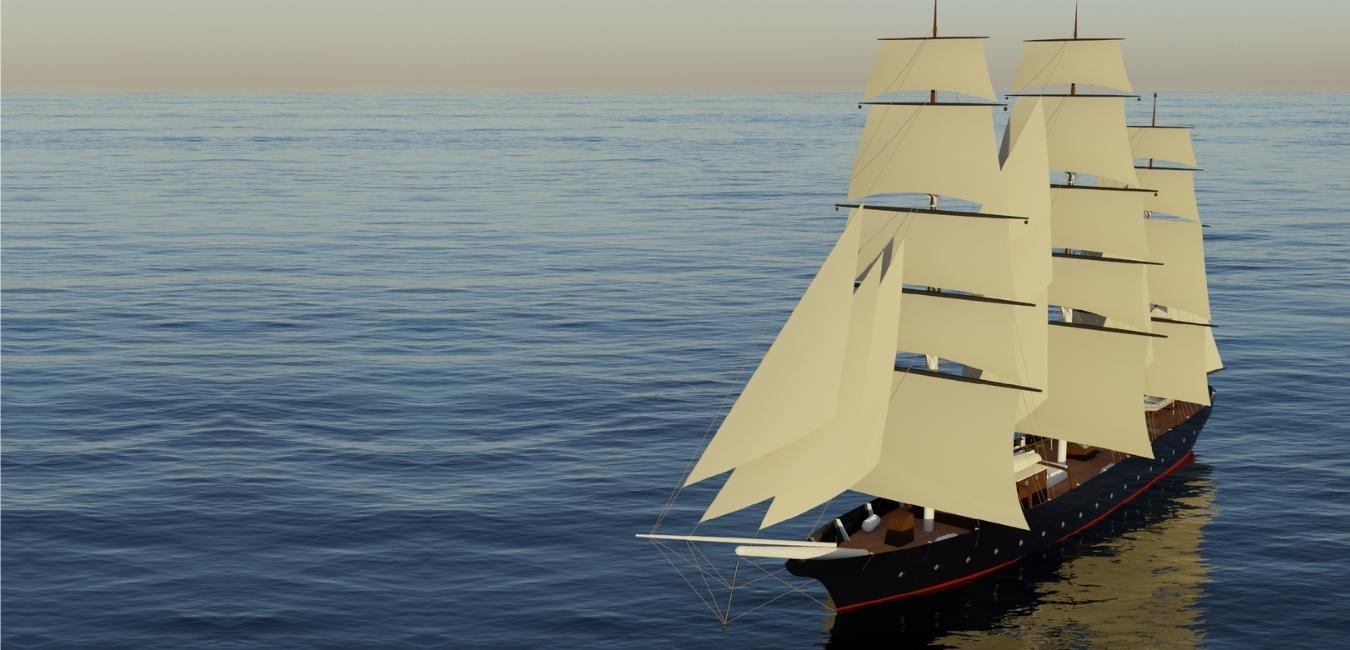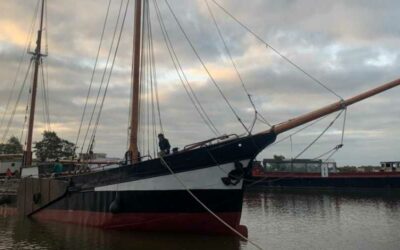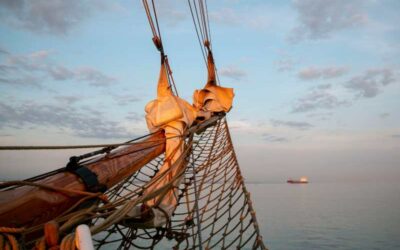EcoClipper is in the final phases of planning for a new prototype design: the ‘EcoClipper500’. This will be the first of a proposed series of ships which will carry up to 36 trainees, 12 passengers and 500 tonnes of cargo across the globe. To realize this, the EcoClipper Tech team has been working on methods to provide sustainable and reliable power for the ship’s systems and for the comfort and safety of the passengers and crew.
During the research and development of the prototype’s hull, EcoClipper worked with Cape Horn Engineering who assessed the shape of a range of hull designs to find the best one in terms of flow through the water and performance predictions. This included the use of high-fidelity RANS-based simulation techniques where accurate forces and moments in time were obtained for the various hull shapes under operating conditions. This technique is a mathematical model where an average of a range of variables is considered to help understand the passage of the water’s turbulent flow along the hull.
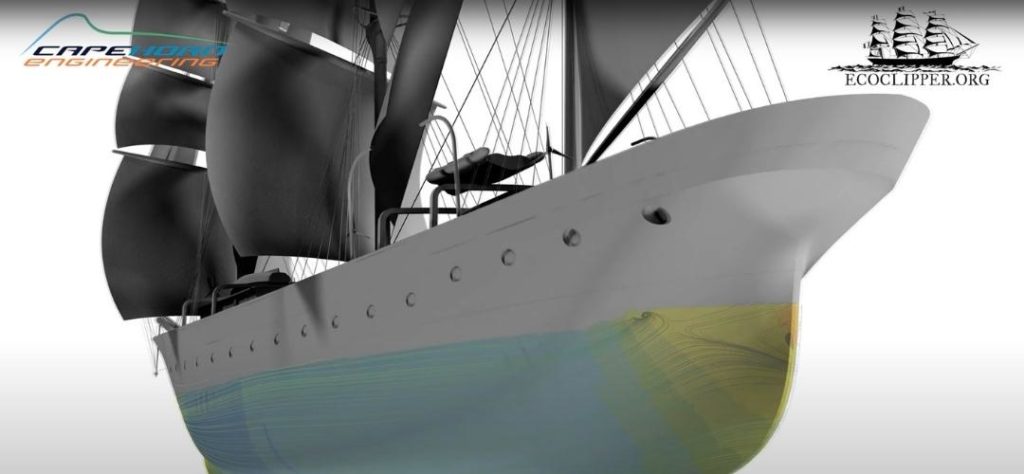
The work with Cape Horn also investigated the best positions for the hydro-generators. As these operate beneath the water line it was important to try and minimize their drag on the ship’s momentum. Similar to using the wind, these hydro-generators provide power by using the movement of the water to turn a turbine.
In the team’s current plans, renewable electric power will be generated by 2 hydro-generators on the hull and by 3 wind turbines located at safe points higher up and set off the masts. These are in the best positions to exploit both the power of the ship through the water and the wind conditions high above the water’s surface. Solar panels will be used where possible. EcoClipper is currently working with engineers on a flexible solar tent which can be raised when the ship is at anchor, or in low wind conditions.
Energy systems production and consumption modeling
Using a computer software tool called ‘Fairwind’ to study weather patterns, estimations of the ship’s speed and average wind conditions, the EcoClipper technical team have been able to run a computer-based climatic model for the creation and consumption of power by an EcoClipper500 when sailing on the proposed Eastern route.
The Eastern route will connect the markets of South East Asia, South Africa and Europe to a sustainable shipping line. On this route an EcoClipper500 will travel through the Indian and Atlantic oceans and, using information from weather stations and satellites, data points were set up and examined every 500 miles along a journey of many thousands.
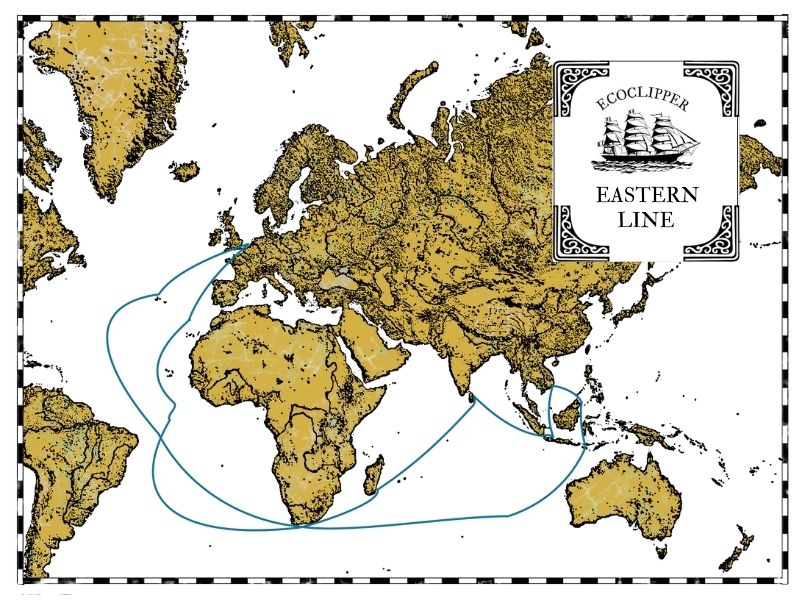
The climate data was drawn from Meteonorm, which provides information for every location on earth with over 8000 climate stations and 5 satellites. From this, and using the predicted ship speed at each data point, the software was able to estimate how much energy the ship would produce from the wind generators, the hydro-generators and the solar tent, and compare this against the expected energy consumption rates.
The galley will be the area of the highest energy use and, while the model showed that at some stages of the journey the energy produced by the ships systems would not cover demand, at other stages the energy return was in excess of the ship’s needs. To balance this out across a voyage, environmentally friendly salt-water batteries will be used to store and release excess energy when required. It will be critical to consider the storage space and the appropriate number of these batteries.
Overall, this model showed that the proposed systems on an EcoClipper500 would cover approximately 98% of the ship’s energy needs.
As the technical team move forward with the planning of the required energy systems, and are able to add more data points to the model, we will continue to develop our understanding of the potential and the energy needs of an EcoClipper500 at sea.
